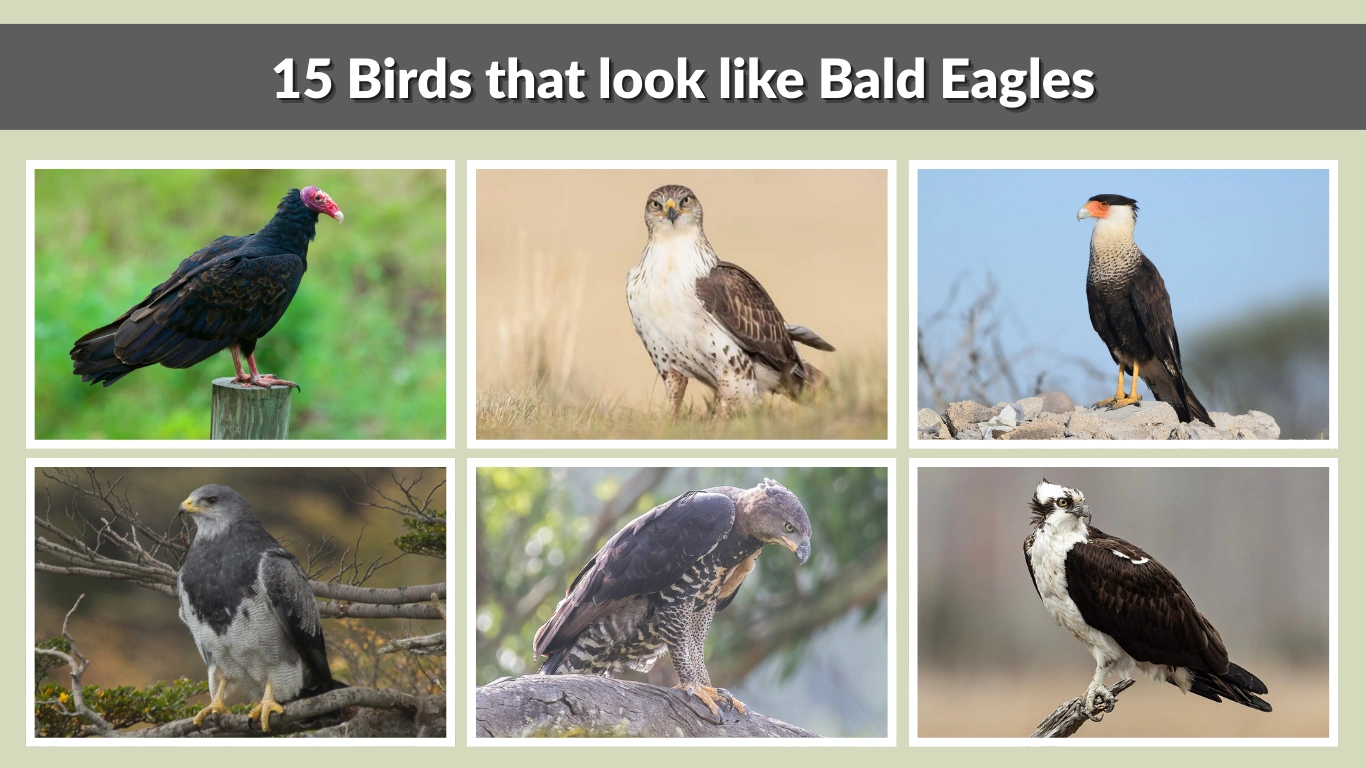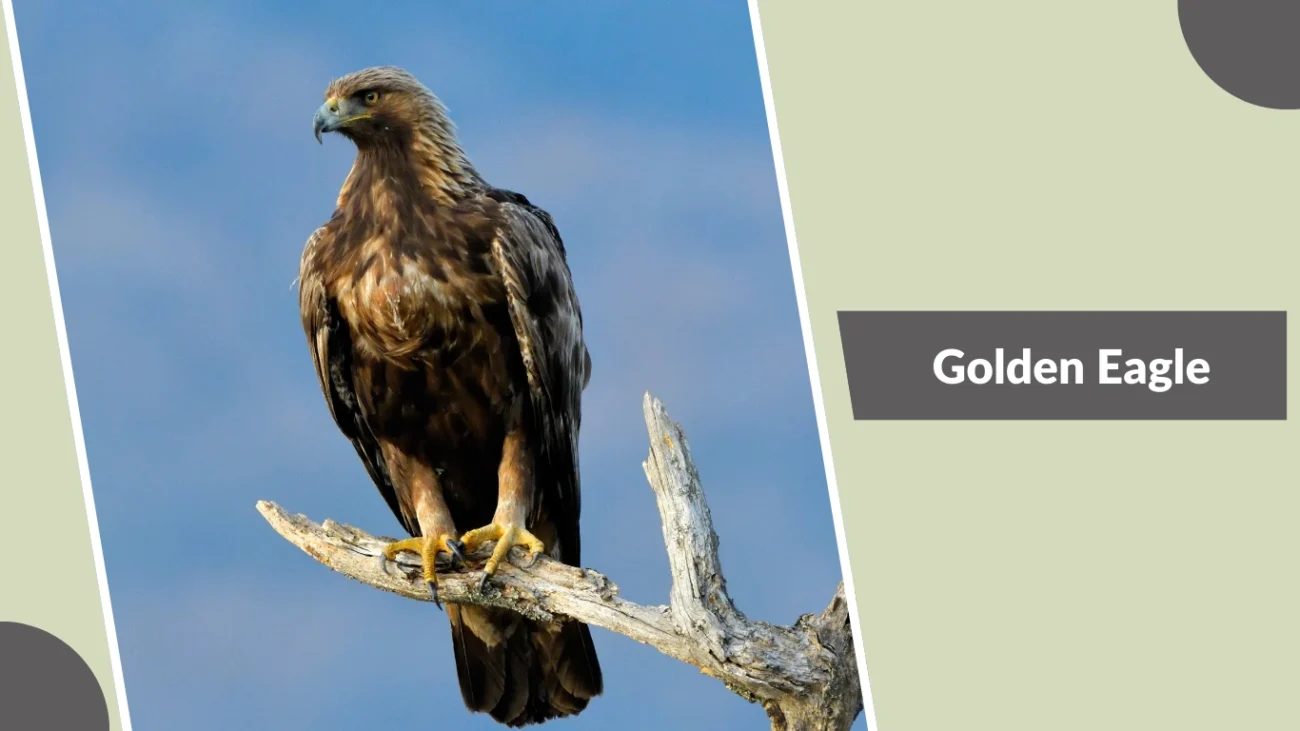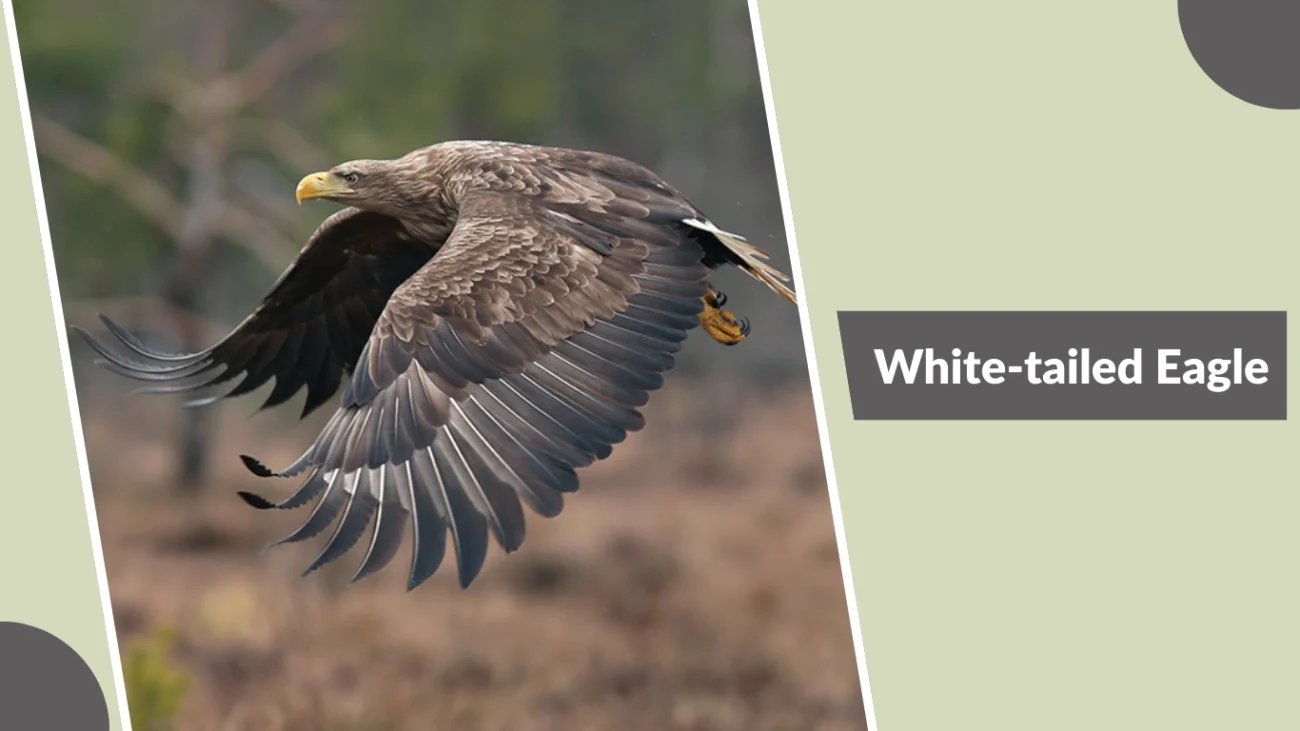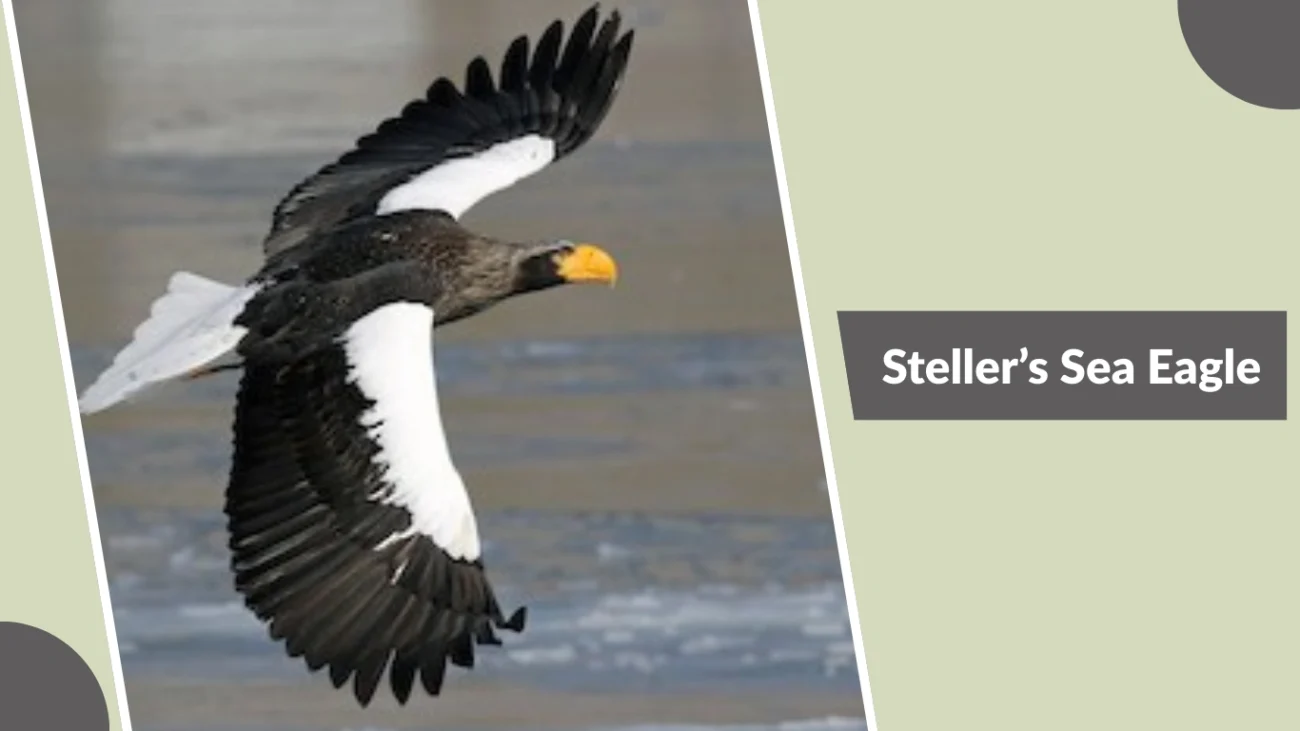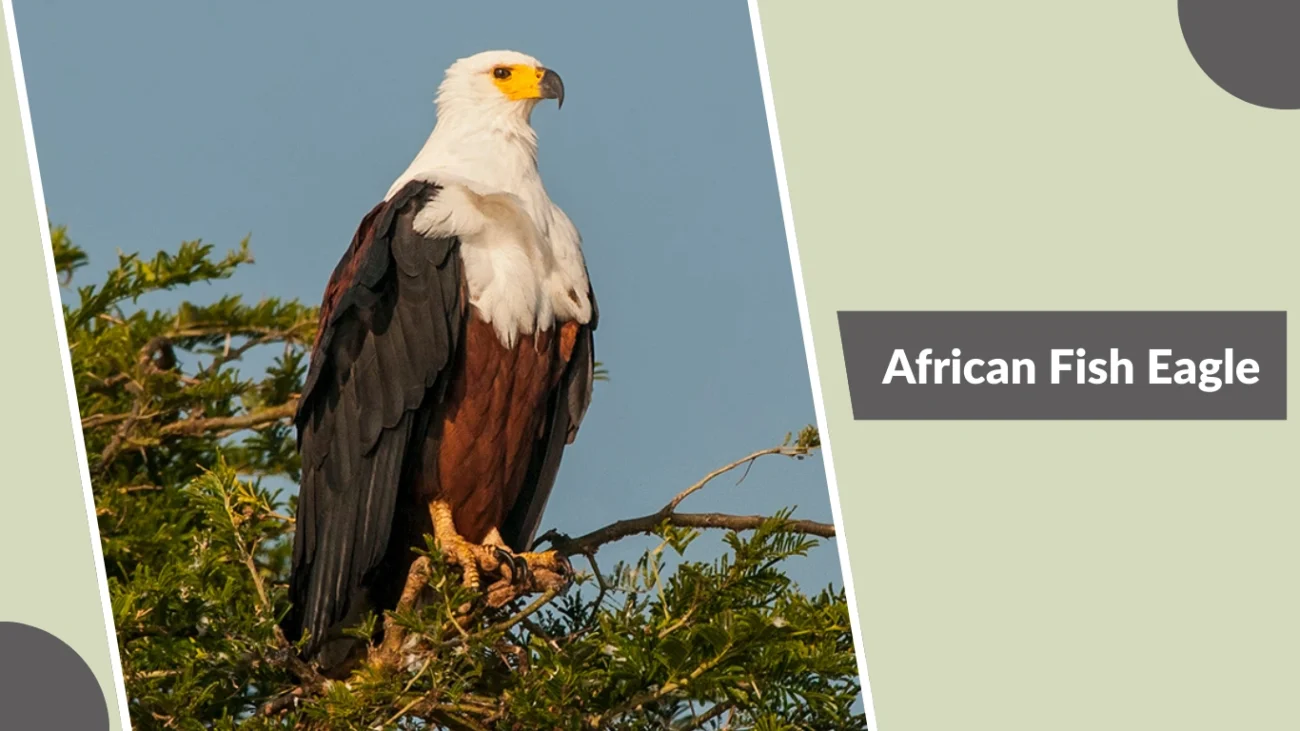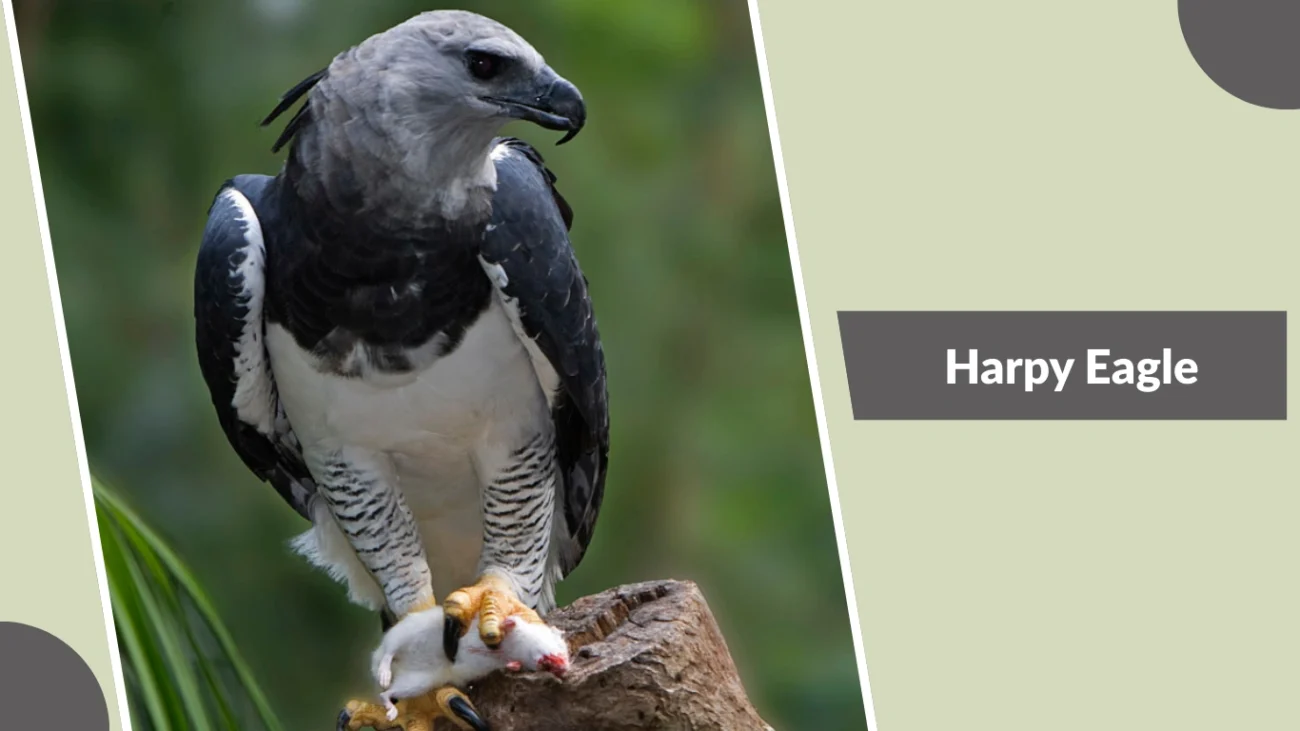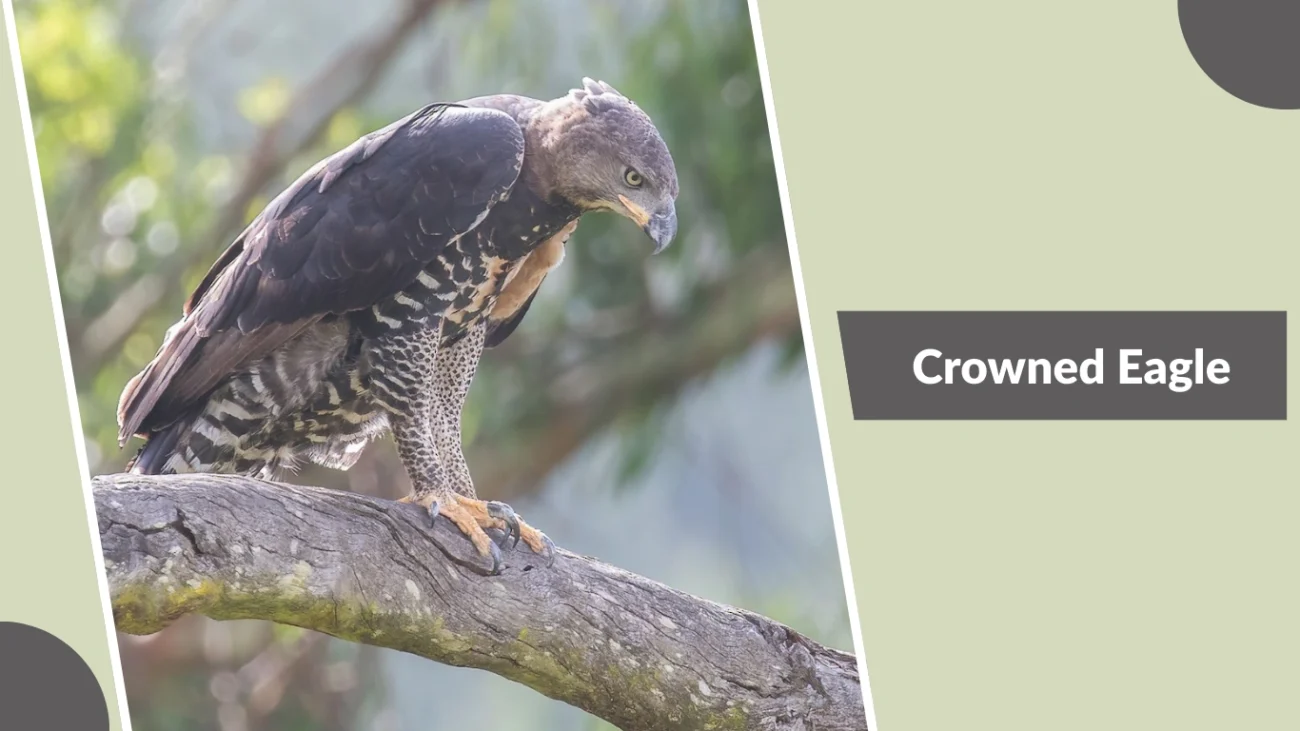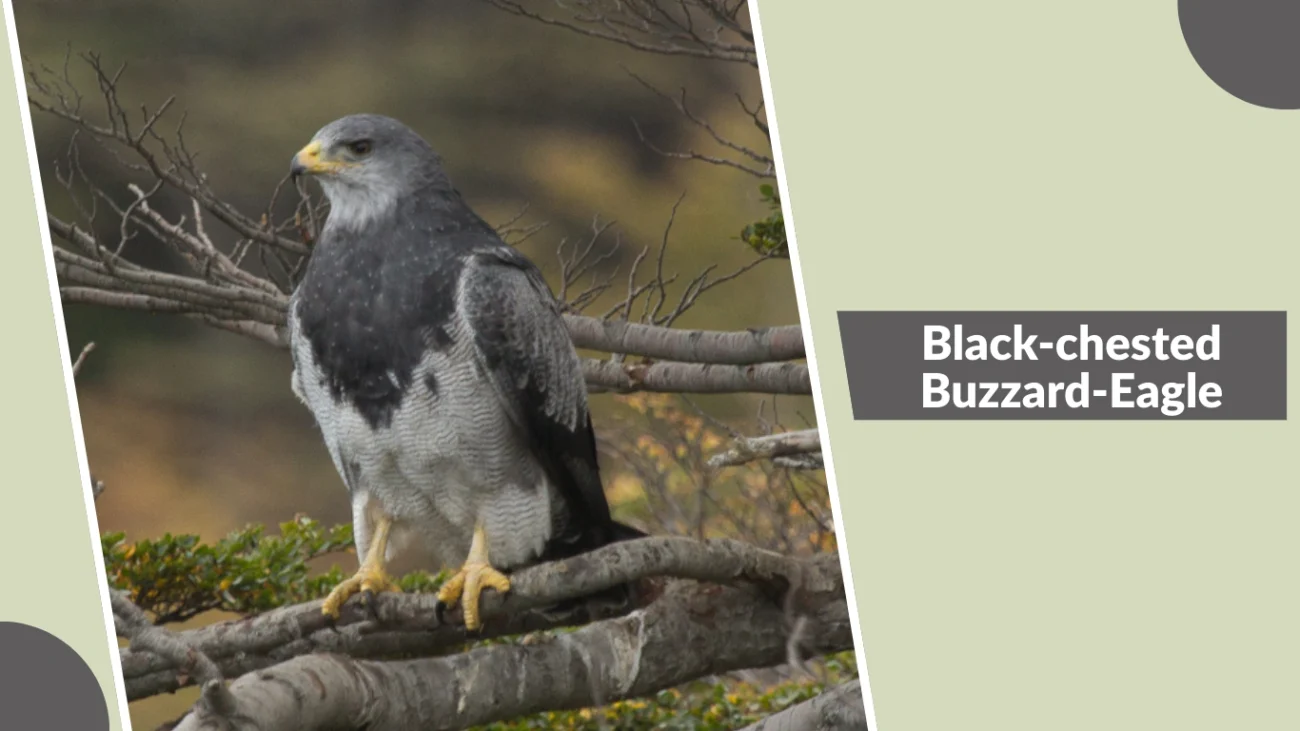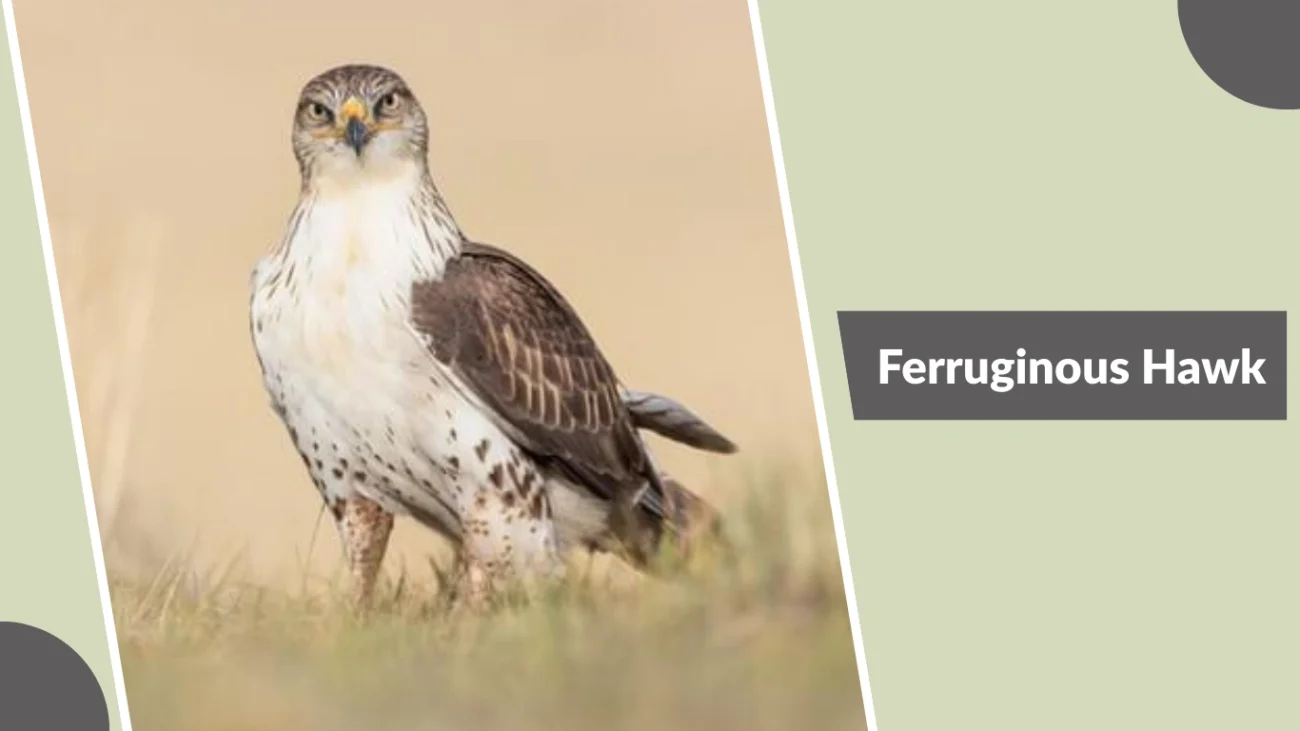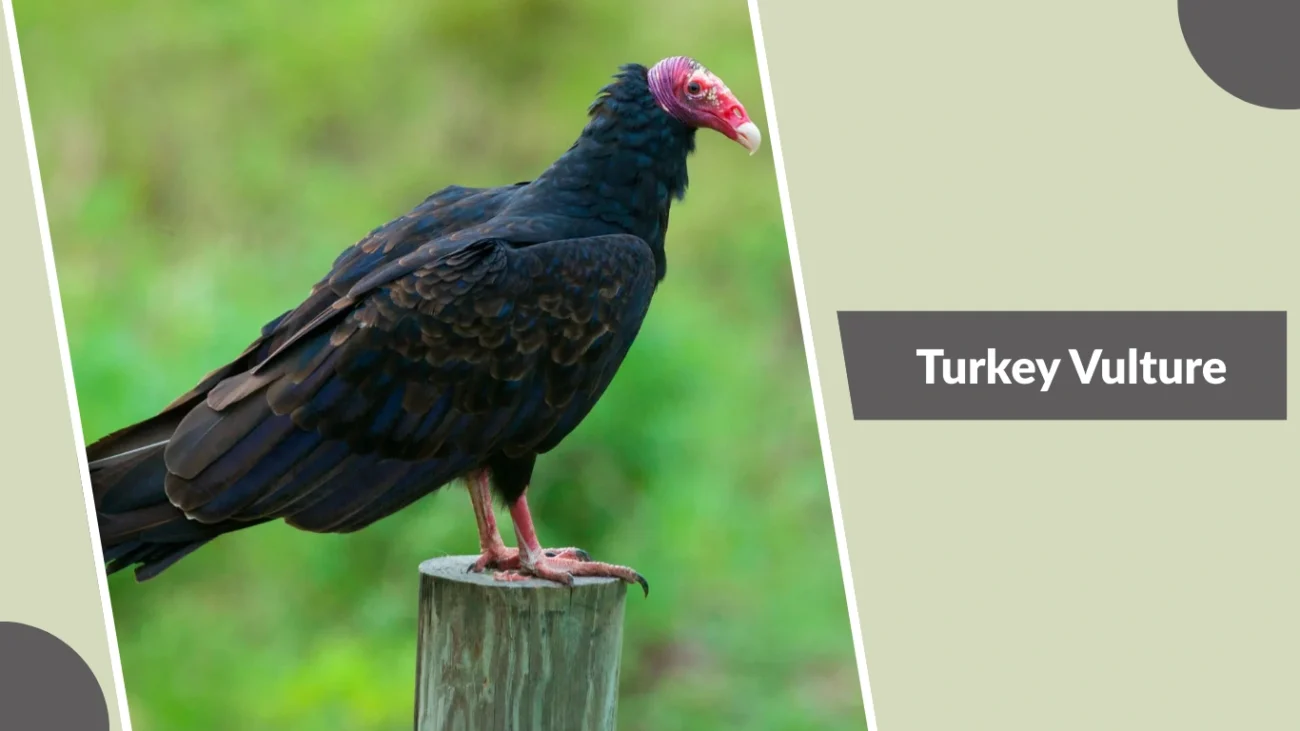Bald Eagles are iconic symbols of strength and freedom, but many other large raptors and soaring birds share similar features that often cause confusion. From their broad wingspans and powerful beaks to their commanding flight styles, these species can easily be mistaken for America’s national bird. In this article, we’ll explore 15 fascinating birds that resemble Bald Eagles, highlighting their unique traits and why they’re often confused with these majestic raptors.
1. Golden Eagle
The Golden Eagle is one of the largest and most powerful birds of prey in the Northern Hemisphere. Often mistaken for a Bald Eagle due to its size and soaring presence, it is distinguished by its golden-brown feathers and keen hunting abilities. Golden Eagles are celebrated for their speed, strength, and wide distribution across North America, Europe, and Asia.
Identification
- Size: Wingspan ranges from 6 to 7.5 feet (1.8–2.3 m)
- Color: Dark brown body with lighter golden feathers on the head and neck
- Beak: Strong, hooked, and grayish-black in color
- Eyes: Intense yellow eyes with sharp vision for spotting prey
- Legs: Feathered all the way down to the talons, unlike Bald Eagles
- Distinct trait: Lacks the white head and tail of the Bald Eagle
Habitat
Golden Eagles prefer open and semi-open regions, such as mountains, cliffs, grasslands, and deserts. They build large nests on high ledges, cliffs, or tall trees, often reusing the same nest for years.
Behavior
These raptors are solitary or found in pairs, known for their incredible hunting skills. They prey on mammals like rabbits, hares, and ground squirrels, but can also take down larger animals when hunting cooperatively. Their powerful flight and ability to soar for long periods make them strikingly similar in silhouette to Bald Eagles.
Importance
Golden Eagles hold cultural significance in many indigenous traditions and are symbols of power, freedom, and vision. Ecologically, they help regulate populations of small mammals, maintaining balance in ecosystems.
2. White-tailed Eagle
The White-tailed Eagle, often called the “sea eagle,” is one of the largest eagles in the world and closely resembles the Bald Eagle in appearance and behavior. Found across Europe and northern Asia, it is a powerful raptor with broad wings, a massive yellow beak, and a striking pale head and tail that can easily cause confusion with the Bald Eagle at a distance.
Identification
- Size: Wingspan ranges from 6.5 to 8 feet (2–2.45 m)
- Color: Brown body with a pale head and distinctive white tail in adults
- Beak: Large, powerful, and bright yellow
- Eyes: Pale yellow with strong vision for hunting
- Legs: Feathered halfway with strong yellow talons
- Distinct trait: Broader wings and shorter tail compared to Bald Eagles
Habitat
White-tailed Eagles thrive near large bodies of water such as coastal cliffs, lakes, and rivers. They require open water for hunting fish and prefer tall trees or cliff edges for nesting, often building massive nests that are reused year after year.
Behavior
These eagles are skilled fishers, swooping down to snatch prey directly from the water surface. They are opportunistic hunters and will also feed on birds, small mammals, and carrion. Their soaring flight and fishing techniques are almost identical to those of the Bald Eagle, making them one of the most similar-looking species.
Importance
The White-tailed Eagle plays a crucial role as a top predator in aquatic ecosystems. It is also a conservation success story in Europe, where populations have recovered significantly after facing near extinction due to hunting and pesticide use in the past.
3. Steller’s Sea Eagle
The Steller’s Sea Eagle is one of the heaviest and most powerful eagles in the world. Native to northeastern Asia, particularly Russia and Japan, it is closely related to the Bald Eagle and shares a similar lifestyle near coastal areas and large rivers. Its massive size, striking coloration, and reliance on fish make it easily comparable to the Bald Eagle.
Identification
- Size: Wingspan ranges from 6.5 to 8.2 feet (2–2.5 m)
- Weight: Can reach up to 20 pounds (9 kg), heavier than most Bald Eagles
- Color: Dark brown to black body with a contrasting white tail, shoulders, and thighs
- Beak: Exceptionally large, deep yellow, and hooked
- Eyes: Bright yellow with sharp vision
- Distinct trait: Much bulkier than a Bald Eagle, with larger beak and white patches on wings
Habitat
Steller’s Sea Eagles inhabit coastal cliffs, river valleys, and forests near the Sea of Okhotsk, Kamchatka, and Hokkaido. They require areas with abundant fish populations, particularly salmon, and prefer nesting in tall trees or rocky cliffs close to water sources.
Behavior
These eagles are powerful hunters and scavengers. Their diet consists mainly of fish, but they also prey on waterfowl and small mammals. They are known for their territorial nature, often defending prime fishing spots. Their flight style and fishing behavior closely resemble the Bald Eagle, although their sheer size makes them more imposing.
Importance
Steller’s Sea Eagles are considered vulnerable due to habitat loss, pollution, and declining fish stocks. They hold cultural importance in Russia and Japan and are admired worldwide for their majestic appearance. Conservation efforts aim to protect their habitats and ensure the survival of this rare giant eagle.
4. African Fish Eagle
The African Fish Eagle is one of the most iconic raptors of Africa, often called the “voice of Africa” due to its distinctive cry. It looks strikingly similar to the Bald Eagle with its white head, dark body, and yellow beak. Found near rivers, lakes, and coastal waters across sub-Saharan Africa, it plays an important ecological role as a fish hunter and scavenger.
Identification
- Size: Wingspan ranges from 6 to 8 feet (1.8–2.4 m)
- Color: White head, chest, and tail; dark brown body and wings
- Beak: Strong, hooked, and bright yellow with a black tip
- Eyes: Yellow iris with excellent vision for spotting fish
- Legs: Yellow with sharp talons adapted for gripping slippery fish
- Distinct trait: Often mistaken for the Bald Eagle due to nearly identical color pattern, though slightly smaller in size
Habitat
The African Fish Eagle thrives in freshwater environments, particularly along rivers, lakes, and reservoirs where fish are abundant. It builds large stick nests in tall trees near water bodies, which are often reused and expanded over time.
Behavior
This eagle is a skilled fisher, swooping down to snatch fish directly from the water surface. It is also opportunistic, feeding on waterfowl, small mammals, and carrion when necessary. Known for its loud, ringing call, it is often heard before being seen. Its hunting style and silhouette in flight resemble those of the Bald Eagle, making it one of the closest look-alike species.
Importance
The African Fish Eagle is a symbol of freedom and power in many African cultures and features on the national emblems of several countries, including Zambia, Namibia, and South Sudan. Ecologically, it helps maintain balance in aquatic ecosystems by controlling fish populations.
5. Osprey
The Osprey, also known as the “fish hawk,” is a large bird of prey found on every continent except Antarctica. Its white head and dark eye stripe give it a Bald Eagle–like appearance, especially when seen from a distance while hunting over water. Unlike true eagles, it belongs to its own unique family (Pandionidae) but shares similar fishing habits with Bald Eagles.
Identification
- Size: Wingspan ranges from 5 to 6 feet (1.5–1.8 m)
- Color: White head with a bold dark stripe through the eyes; brown back and wings; white underparts
- Beak: Short, black, and hooked for tearing fish
- Eyes: Golden-yellow, adapted for spotting fish beneath the water’s surface
- Legs: Pale with long, curved talons and rough pads that grip slippery prey
- Distinct trait: Narrower wings with a characteristic “M” shape in flight, unlike the broader wings of a Bald Eagle
Habitat
Ospreys live near coastlines, lakes, rivers, and reservoirs worldwide. They prefer areas with shallow waters where fish are abundant. Their nests are usually built on tall trees, cliffs, or man-made structures like utility poles and platforms.
Behavior
Ospreys are expert fish hunters, hovering above water before plunging feet-first to catch prey. Unlike Bald Eagles, they almost exclusively eat fish. They migrate long distances, with some populations traveling thousands of miles between breeding and wintering grounds. Their flight silhouette and hunting style often cause them to be mistaken for young Bald Eagles.
Importance
The Osprey is a conservation success story, having recovered from population declines due to pesticide use in the mid-20th century. Today, it is a symbol of healthy aquatic ecosystems and is admired for its incredible fishing skills and adaptability.
6. Harpy Eagle
The Harpy Eagle is one of the largest and most powerful eagles in the world, native to Central and South America. Its sheer size, strong build, and commanding presence can make it look similar to a Bald Eagle at a distance, especially when perched. Known for its striking crest and massive talons, it is a top predator of tropical rainforests.
Identification
- Size: Wingspan of 6 to 7.5 feet (1.8–2.3 m)
- Weight: Can reach up to 20 pounds (9 kg), among the heaviest eagles
- Color: Slate-gray back, white underside, and black chest band
- Beak: Large, hooked, and black
- Eyes: Dark brown with piercing vision
- Legs: Exceptionally thick and feathered with the largest talons of any eagle species
- Distinct trait: Double crest of black feathers on the head, giving a unique appearance
Habitat
Harpy Eagles inhabit tropical rainforests from southern Mexico through Central America and into South America, particularly in the Amazon Basin. They nest high in tall emergent trees and require large territories of undisturbed forest.
Behavior
These eagles are apex predators, hunting large prey such as monkeys, sloths, and birds. They rely on stealth and power rather than speed, swooping silently through the canopy to ambush prey. Though bulkier than Bald Eagles, their size, silhouette, and commanding presence can make them appear similar when observed from afar.
Importance
The Harpy Eagle is a keystone species in rainforest ecosystems, helping regulate populations of medium-sized mammals. It is also a cultural symbol in several Latin American countries, representing strength and majesty. Due to deforestation and habitat loss, however, it is classified as Near Threatened.
7. Philippine Eagle
The Philippine Eagle, also known as the “monkey-eating eagle,” is one of the rarest and most powerful raptors in the world. Endemic to the Philippines, it is often compared to the Bald Eagle due to its impressive size, hooked beak, and commanding presence. With its tall crest and striking plumage, it is a national symbol of strength and resilience.
Identification
- Size: Wingspan of 6.5 to 7.2 feet (2–2.2 m)
- Weight: Between 14–18 pounds (6–8 kg)
- Color: Brown upperparts with white belly and underwings
- Beak: Large, hooked, and bluish-gray
- Eyes: Pale grayish-blue with sharp vision
- Legs: Powerful, yellow, and fully feathered with strong talons
- Distinct trait: Long, shaggy crest feathers on the head, giving it a crown-like appearance
Habitat
This eagle is found only in the Philippines, particularly on the islands of Luzon, Leyte, Samar, and Mindanao. It inhabits dense tropical rainforests, nesting in tall emergent trees where it has access to abundant prey.
Behavior
The Philippine Eagle is a top predator, primarily feeding on monkeys, flying lemurs, large birds, and reptiles. It is monogamous and mates for life, raising a single chick every two years. Its size, silhouette, and hunting style in the forest canopy often draw comparisons to the Bald Eagle’s power and dominance in open habitats.
Importance
Declared the national bird of the Philippines, the Philippine Eagle symbolizes pride and heritage. Ecologically, it plays a crucial role in maintaining rainforest balance by regulating prey populations. Unfortunately, it is critically endangered due to deforestation, hunting, and habitat loss, with fewer than 600 individuals estimated to remain in the wild.
8. Crowned Eagle
The Crowned Eagle, also called the African Crowned Eagle, is one of the most powerful raptors native to sub-Saharan Africa. Its bold crest, large body, and fierce hunting style give it a commanding presence similar to the Bald Eagle, though it inhabits dense forests rather than open waters. Known for its strength, it is capable of taking prey several times its own weight.
Identification
- Size: Wingspan ranges from 5 to 6 feet (1.5–1.8 m)
- Weight: Around 7–10 pounds (3–4.5 kg)
- Color: Dark brown upperparts with barred underparts; white belly and legs with black streaks
- Beak: Black, powerful, and hooked for tearing flesh
- Eyes: Bright yellow to amber with intense vision
- Legs: Feathered and strong with long talons designed for gripping large prey
- Distinct trait: Prominent crest of black feathers on the head, giving a “crowned” look
Habitat
Crowned Eagles are found in forests, woodlands, and riverine areas across eastern, central, and southern Africa. They prefer dense forest cover for hunting and nesting but can adapt to wooded savannas as well. Nests are usually built high in tall trees.
Behavior
These eagles are ambush predators, relying on stealth and sudden bursts of power. They prey primarily on medium-sized mammals such as monkeys, hyraxes, and small antelopes. Unlike the Bald Eagle’s fishing lifestyle, the Crowned Eagle’s hunting style is more forest-focused, but its size and predatory dominance draw strong comparisons.
Importance
The Crowned Eagle plays a key ecological role by regulating populations of forest-dwelling mammals. It is revered in many African cultures as a symbol of courage and strength. However, due to habitat destruction and conflict with humans, it is currently listed as Near Threatened.
9. Martial Eagle
The Martial Eagle is Africa’s largest eagle and one of the most powerful birds of prey in the world. With its massive size, broad wings, and commanding flight, it resembles the Bald Eagle in appearance and dominance within its habitat. This apex predator is widely respected for its strength and hunting skills across sub-Saharan Africa.
Identification
- Size: Wingspan ranges from 6.5 to 8.5 feet (2–2.6 m)
- Weight: Between 8–14 pounds (3.5–6.5 kg)
- Color: Dark brown upperparts, white underparts heavily spotted with dark brown
- Beak: Large, black, and strongly hooked
- Eyes: Bright yellow with sharp vision suited for open-country hunting
- Legs: Feathered with massive talons capable of killing large prey
- Distinct trait: Dark head and chest with contrasting white belly, giving a bold appearance
Habitat
Martial Eagles prefer open savannas, semi-deserts, and lightly wooded areas across sub-Saharan Africa. They build enormous stick nests in tall trees or on cliff ledges, often reusing them for years.
Behavior
These eagles are solitary hunters, soaring high above open landscapes in search of prey. They feed on a wide range of animals, including medium-sized mammals, large birds, and reptiles. Known for their strength, Martial Eagles can take down prey as large as antelope calves. Their soaring flight and dominance in the sky mirror the Bald Eagle’s presence over North American waters.
Importance
As apex predators, Martial Eagles help regulate populations of smaller animals, contributing to ecosystem balance. They are admired for their power but face threats from habitat loss and persecution, particularly by farmers. They are currently listed as Vulnerable due to declining populations.
10. Black-chested Buzzard-Eagle
The Black-chested Buzzard-Eagle is a large raptor native to South America, often mistaken for an eagle due to its impressive size and soaring flight. Its dark chest and broad wings give it a commanding silhouette that can resemble the Bald Eagle from afar, especially when gliding over open landscapes.
Identification
- Size: Wingspan ranges from 5.5 to 6.5 feet (1.7–2 m)
- Weight: Typically 5–9 pounds (2.2–4 kg)
- Color: Dark gray to black upperparts, white underparts with a contrasting black chest band
- Beak: Strong, hooked, and black with a yellow cere
- Eyes: Dark brown with sharp vision
- Legs: Yellow with strong talons adapted for gripping prey
- Distinct trait: Broad wings and contrasting plumage pattern that gives an eagle-like appearance
Habitat
This raptor inhabits mountainous regions, open grasslands, and shrublands across South America, especially in the Andes. It prefers high elevations but can also be seen in lowland areas near open spaces where prey is abundant.
Behavior
The Black-chested Buzzard-Eagle is a skilled hunter, preying on mammals such as rabbits and rodents, as well as birds and reptiles. It often hunts from the air, soaring high before diving at great speed to capture prey. Its majestic flight and powerful presence make it comparable to the Bald Eagle in dominance and appearance.
Importance
As a top predator, it plays a crucial role in maintaining the balance of prey populations in its ecosystem. It is also admired by birdwatchers for its graceful soaring over South American landscapes. The species is not currently threatened and remains fairly widespread.
11. Red-tailed Hawk
The Red-tailed Hawk is one of the most widespread raptors in North America. Although smaller than the Bald Eagle, its broad wings, soaring behavior, and commanding presence in the sky often lead to confusion between the two, especially from a distance. Its adaptability allows it to thrive in diverse environments, from forests to open plains.
Identification
- Size: Wingspan ranges from 3.5 to 4.8 feet (1.1–1.5 m)
- Weight: Between 1.5–3.5 pounds (0.7–1.6 kg)
- Color: Brown upperparts, pale underparts with streaked belly, and a distinctive reddish tail in adults
- Beak: Small, hooked, and dark gray to black
- Eyes: Dark brown with sharp, focused vision
- Legs: Yellow, lightly feathered with sharp talons
- Distinct trait: The reddish-brown tail is the most recognizable feature, though juveniles have banded brown tails
Habitat
Red-tailed Hawks inhabit a wide range of environments, including grasslands, deserts, forests, agricultural fields, and urban areas. They often perch on poles, tall trees, or cliffs while scanning for prey.
Behavior
These hawks are opportunistic hunters, feeding on rodents, rabbits, birds, and reptiles. They use soaring and circling flight patterns that resemble those of Bald Eagles. Their shrill, piercing call is iconic and often used in movies to represent raptors in general.
Importance
Red-tailed Hawks are essential in controlling rodent populations, making them valuable for natural pest control. They are one of the most recognized and admired hawks in North America, symbolizing vision and adaptability.
12. Swainson’s Hawk
Swainson’s Hawk is a large migratory raptor of North America, often mistaken for the Bald Eagle due to its broad wings and soaring flight. Known for its incredible long-distance migrations, it travels thousands of miles each year between breeding grounds in North America and wintering grounds in South America.
Identification
- Size: Wingspan ranges from 4 to 4.5 feet (1.2–1.4 m)
- Weight: Between 1.5–3 pounds (0.7–1.4 kg)
- Color: Variable plumage—light morphs have white underparts with a reddish chest, while dark morphs appear almost entirely brown
- Beak: Short, hooked, and dark gray to black
- Eyes: Dark brown with keen eyesight for spotting prey while soaring
- Legs: Yellow with sharp talons
- Distinct trait: Long, pointed wings and shorter tails compared to eagles, but in flight can appear very eagle-like
Habitat
Swainson’s Hawks breed in the western plains and grasslands of North America, nesting in trees or shrubs near open areas. During migration, they are often seen in huge flocks, sometimes numbering in the thousands, especially over Central America.
Behavior
These hawks are opportunistic feeders. During breeding season, they primarily hunt small mammals such as ground squirrels, rabbits, and rodents. On migration and wintering grounds, they feed heavily on insects, particularly grasshoppers and dragonflies. Their soaring style and silhouette are similar to Bald Eagles, especially at a distance.
Importance
Swainson’s Hawks play a significant role in controlling agricultural pests, especially grasshoppers. Their spectacular migrations also make them a favorite among birdwatchers. However, they are vulnerable to habitat loss and pesticide use in both breeding and wintering ranges.
13. Ferruginous Hawk
The Ferruginous Hawk is the largest hawk in North America and is often confused with a young Bald Eagle due to its impressive size, broad wings, and pale plumage. It is a powerful raptor of the open country, thriving in grasslands and prairies where it hunts small mammals.
Identification
- Size: Wingspan ranges from 4.5 to 5 feet (1.4–1.5 m)
- Weight: Between 2–4.5 pounds (0.9–2 kg)
- Color: Two morphs—light morph with whitish underparts and reddish-brown shoulders, and dark morph with chocolate-brown plumage
- Beak: Short, hooked, and dark gray with yellow cere
- Eyes: Pale yellow to brown with sharp vision
- Legs: Feathered all the way down to the toes, resembling eagle-like features
- Distinct trait: Broad wings and large body size, giving it a silhouette similar to small eagles
Habitat
Ferruginous Hawks are found in open plains, deserts, and grasslands of western North America. They build large stick nests on cliffs, trees, or even artificial structures like power poles.
Behavior
These hawks primarily hunt ground-dwelling mammals such as prairie dogs, jackrabbits, and gophers. They soar high above open country, scanning for prey, and can also hunt cooperatively in pairs. Their eagle-like flight pattern and bulk make them easily mistaken for young Bald Eagles.
Importance
As apex predators of the prairie, Ferruginous Hawks play a vital role in controlling rodent populations. They are admired for their strength and are a conservation priority in some areas due to habitat loss and declining prey populations.
14. Crested Caracara
The Crested Caracara, sometimes called the “Mexican Eagle,” is a striking bird of prey found in the Americas. While not a true eagle, its size, posture, and bold appearance often cause it to be mistaken for one, including the Bald Eagle. It is unique among raptors for its mix of scavenging and hunting behaviors.
Identification
- Size: Wingspan ranges from 4 to 4.5 feet (1.2–1.4 m)
- Weight: Between 2–3.5 pounds (0.9–1.6 kg)
- Color: Blackish body with white neck, face, and wing patches; orange-yellow skin around the beak
- Beak: Large, hooked, and pale bluish-gray with yellow base
- Eyes: Brown, set within bare facial skin that changes from yellow to orange with age
- Legs: Long, yellow, and unfeathered—longer than most eagles or hawks
- Distinct trait: Prominent black cap and long-legged stance, giving a vulture-eagle hybrid look
Habitat
Crested Caracaras inhabit open areas such as grasslands, deserts, savannas, and pastures. They are found in the southern United States, Central America, and South America. They often perch on trees, fences, or utility poles while scanning for food.
Behavior
Unlike Bald Eagles, which primarily hunt, Crested Caracaras are opportunistic scavengers, often feeding on carrion. However, they also hunt small animals, reptiles, and insects. They are strong fliers and spend time both soaring and walking on the ground, which is unusual for large raptors. Their commanding look in flight can resemble a Bald Eagle at a distance.
Importance
Crested Caracaras are ecologically significant as scavengers, helping clean up carrion from ecosystems. They are also cultural icons, appearing in folklore and national symbols, particularly in Mexico. Their adaptability has allowed them to thrive even in human-altered landscapes.
15. Turkey Vulture
The Turkey Vulture is a large soaring bird that, from a distance, can resemble a Bald Eagle due to its broad wings and gliding style. Although it is a scavenger rather than a hunter, its widespread presence across the Americas often leads to confusion with eagles when seen circling high in the sky.
Identification
- Size: Wingspan ranges from 5.5 to 6.5 feet (1.7–2 m)
- Weight: Between 2–4.5 pounds (0.9–2 kg)
- Color: Dark brown to black plumage with lighter underwing coverts
- Beak: Small, pale, and hooked—adapted for tearing carrion
- Head: Bare, red in adults and grayish in juveniles
- Eyes: Dark with strong vision and an extraordinary sense of smell
- Distinct trait: Wings held in a shallow “V” shape while soaring, unlike the flat-winged Bald Eagle
Habitat
Turkey Vultures are found throughout the Americas, from southern Canada to the tip of South America. They thrive in open and semi-open areas, including forests, deserts, grasslands, and agricultural regions. They roost communally in trees or on cliffs.
Behavior
These birds feed almost exclusively on carrion, locating it through their excellent sense of smell—unlike eagles, which rely on vision. In flight, they soar gracefully for long periods with minimal wingbeats, often confusing observers into thinking they are watching eagles. Their role as scavengers makes them critical to ecosystem health.
Importance
Turkey Vultures play a vital role in cleaning the environment by consuming dead animals, preventing the spread of disease. Despite their eerie appearance, they are harmless to humans and beneficial to ecosystems. They are protected under conservation laws across much of their range.

